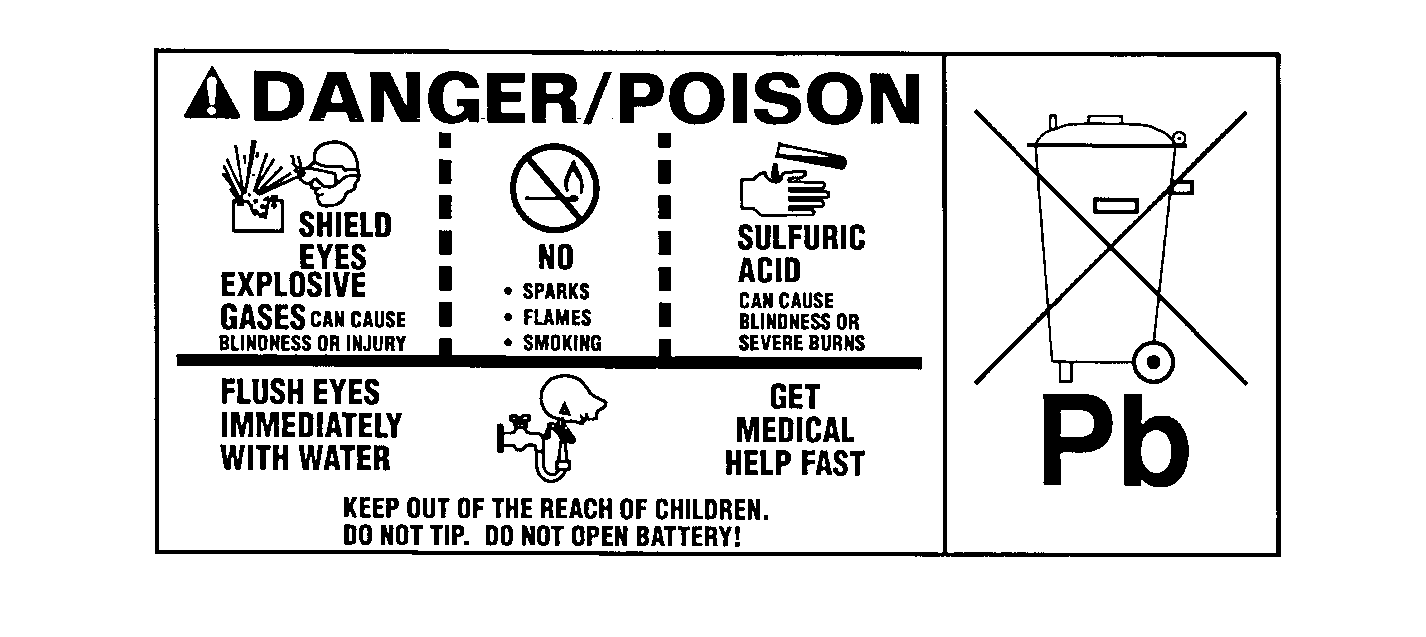Caution: Batteries generate hydrogen gas, which is extremely flammable and may explode violently if ignited by a spark or a flame. Battery acid is extremely corrosive and causes severe personal injury if the acid comes into contact with the skin, and blindness if the acid comes into contact with the eyes. In order to avoid severe personal injury, use extreme caution when servicing the battery or battery-related components.

Battery
The maintenance free battery is standard. There are no vent plugs in the cover. The battery is completely sealed except for two small vent holes in the side. These vent holes allow the small amount of gas that is produced in the battery to escape.
The battery has three functions as a major source of energy:
| • | Engine cranking |
| • | Voltage stabilizer |
| • | Alternate source of energy with generator overload. |
The battery specification label contains information about the following:
| • | The test ratings |
| • | The original equipment catalog number |
| • | The recommended replacement model number |

Battery Ratings
A battery has two ratings:
| • | Reserve capacity |
| • | Cold cranking amperage |
When a battery is replaced use a battery with similar ratings. Refer to the battery specification label on the original battery or refer to Battery Usage .
Reserve Capacity
Reserve capacity is the amount of time in minutes it takes a fully charged battery, being discharged at a constant rate of 25 amperes and a constant temperature of 27°C (80°F) to reach a terminal voltage of 10.5 volts. Refer to Battery Usage for the reserve capacity rating of the original equipment battery.
Cold Cranking Amperage
The cold cranking amperage is an indication of the ability of the battery to crank the engine at cold temperatures. The cold cranking amperage rating is the minimum amperage the battery must maintain for 30 seconds at -18°C (0°F) while maintaining at least 7.2 volts. Refer to Battery Usage for the cold cranking amperage rating for this vehicle.
